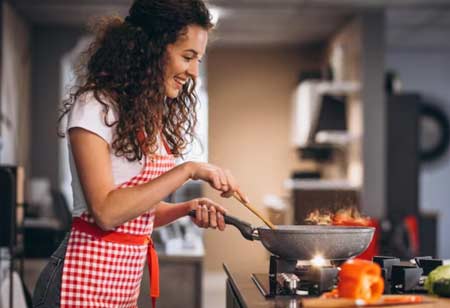THANK YOU FOR SUBSCRIBING
Be first to read the latest tech news, Industry Leader's Insights, and CIO interviews of medium and large enterprises exclusively from Food and Beverage Tech Review
Preventing Foodborne Illness: Best Practices for Every Cook
Decorating robots, artificial intelligence-powered smart ovens, and computerized inventory management are some of the most important areas of bakery technology and hardware.

By
Food and Beverages Tech Review | Wednesday, April 23, 2025
Stay ahead of the industry with exclusive feature stories on the top companies, expert insights and the latest news delivered straight to your inbox. Subscribe today.
FREMONT, CA: People trust the cook when they eat at someone else's house and cook food in their kitchen, believing it is safe, delicious, and of high quality and taste.
Most of us undoubtedly care more about the dish's flavor than about food safety. Many joke that one should never peek inside their favorite restaurant's kitchen because they might be surprised by what they discover.
This extends beyond our restaurants to farms, factories, and other establishments that produce food, including suppliers, cooks, and kitchen assistants. To safeguard customers, safe food handling procedures must be implemented at every link in the supply chain.
Personal cleanliness: Food handlers need to practice extreme hygiene to guarantee that the food is safe to eat and that patrons do not contract food illness. They must routinely wash their hands both before and after handling meals using soap and water. It is essential to thoroughly and frequently clean the kitchen or cooking station and the tools, including plates, cutting boards, and counters. Products like fruits and vegetables must also be well-cleaned under running water.
Cooking: One would believe that all germs would be eliminated once cooking began. However, cooking food at a temperature high enough to kill pathogens is the only way to guarantee it is cooked safely. At home, we use the color and texture of food to determine whether it has been cooked to perfection using our eyes. However, cooks utilize a food thermometer in a professional food company setting to ensure the food is cooked to safe interior temperatures. Foods should be prepared to different temperatures; for instance, chicken should be cooked to 74°C, whereas beef slices should be cooked to 63°C.
Proper food storage: Food left outside normally spoils more quickly, especially if it is left at room temperature. Additionally, our hot, tropical climate makes it easier for bacteria to proliferate. Refrigerator temperatures must be kept at four °C or below for storing food. Instead of just keeping food in the open kitchen, thawed food from the freezer should be placed in the refrigerator or microwave.
I agree We use cookies on this website to enhance your user experience. By clicking any link on this page you are giving your consent for us to set cookies. More info







